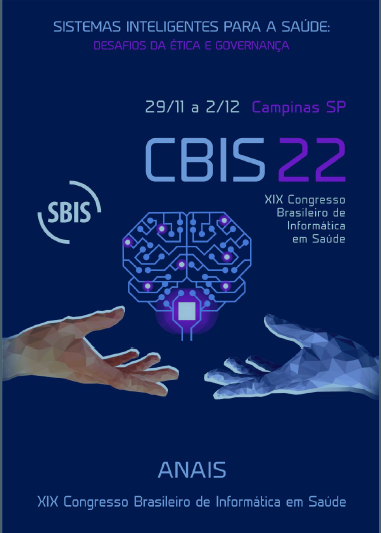Signal Quality Assessment of Photoplethysmogram Signals Using Hybrid Rule- and Learning-Based Models
DOI:
https://doi.org/10.59681/2175-4411.v15.iEspecial.2023.1080Keywords:
Quality Assessment, Photoplethysmography, Deep LearningAbstract
Photoplethysmography signals are crucial for a wide range of applications and, therefore, high-quality PPG signals are crucial to describe the cardiorespiratory status accurately. Motion artifacts can impair PPG-based applications, especially when these signals are recorded via wearable devices. Taking that in consideration, some researchers had proposed few methods for assessing the quality of these signals. Some rule- and learning-based approaches for PPG signal are available to determine the quality of the signal. In this paper, we propose a tradeoff between these two approaches by introducing a hybrid model that employs both learning and decision rules to determine the quality of the signal.
References
A Quality Assessment System for PPG Waveform. Hao, Jiang, and Gao Bo. 2021, 2021 IEEE 3rd International Conference on Circuits and Systems (ICCS).
Optimal signal quality index for photoplethysmogram signals. Elgendi, Mohamed. 2016, Bioengineering 3.4, p. 21.
Extending the battery lifetime of wearable sensors with embedded machine learning. Fafoutis, X., Marchegiani, L., Elsts, A., Pope, J., Piechocki, R., & Craddock. 2018, IEEE 4th World Forum on Internet of Things (WF-IoT).
A survey of convolutional neural networks: analysis, applications, and prospects. Li, Z., Liu, F., Yang, W., Peng, S., & Zhou, J. 2021, IEEE transactions on neural networks and learning systems.
1-D convolutional neural networks for signal processing applications. Kiranyaz, S., Ince, T., Abdeljaber, O., Avci, O., & Gabbouj, M. 2019, ICASSP 2019-2019 IEEE International Conference on Acoustics, Speech and Signal Processing (ICASSP).
Keras-Spiking. www.nengo.ai/keras-spiking. [Online]
Cross-validation. Refaeilzadeh, Payam, Lei Tang, and Huan Liu. 2009, Encyclopedia of database systems 5, pp. 532-538.
Accelerated visual context classification on a low-power smartwatch. Conti, F., Palossi, D., Andri, R., Magno, M., & Benini, L. 2016, IEEE Transactions on Human-Machine Systems 47.1, pp. 19-30.
A novel method for accurate estimation of HRV from smartwatch PPG signals. Bhowmik, Tanmoy, Jishnu Dey, and Vijay Narayan Tiwari. 2017, 2017 39th annual international conference of the IEEE engineering in medicine and biology society (EMBC), pp. 109-112.
Downloads
Published
How to Cite
Issue
Section
License
Copyright (c) 2023 Giovani Decico Lucafó, Pedro Freitas, Rafael Lima, Gustavo da Luz, Ruan Bispo, Paula Rodrigues, Frank Cabello, Otavio Penatti

This work is licensed under a Creative Commons Attribution-NonCommercial-ShareAlike 4.0 International License.
Submission of a paper to Journal of Health Informatics is understood to imply that it is not being considered for publication elsewhere and that the author(s) permission to publish his/her (their) article(s) in this Journal implies the exclusive authorization of the publishers to deal with all issues concerning the copyright therein. Upon the submission of an article, authors will be asked to sign a Copyright Notice. Acceptance of the agreement will ensure the widest possible dissemination of information. An e-mail will be sent to the corresponding author confirming receipt of the manuscript and acceptance of the agreement.

